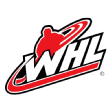There is no guarantee that the Team North America format will continue at the next World Cup. In fact, there are discussions going on between the NHL and NHLPA about that topic, which will obviously continue once the current tournament wraps up and the results evaluated. But in the event that it does, here is my glance toward what the next club might look like; specifically, who will be the best American and Canadian players under 24 at the time of that tournament?
You'll notice most of the players listed here come from the 2015 and 2016 draft classes. There is one player from the 2017 class, and two from the 2018 class, reflecting the strengths of the top of those classes.
Before you counter with "Player X should on this team!", the response is that in all likelihood, they are too old, with the cut-off point being under age 24 on Oct. 1, 2020. Dylan Larkin? Too old. Sam Bennett? Too old. Sam Reinhart? Too old. Budding star Jack Eichel made the cut off by under a month.
Trying to project the goaltenders was painful. The top American goalie prospect, Thatcher Demko, with zero NHL games and at the age of 20, will not be eligible for the 2020 team. Same for the second-best American prospect, Jon Gillies, and second-best Canadian prospect Malcolm Subban. The current Team North America roster has zero first-round picks among their three goalies. As we've discussed, projecting how prospect goalies will develop is quite difficult, making this part of the roster the most challenging.
Here is my projection of the 2020 Team North America roster, on the eve of the 2016 tournament:
Forwards

Connor McDavid, Edmonton Oilers
I assume in four years that McDavid will be brought into the rink on the shoulders of armed guards and known as King Connor McDavid the First, Ruler of the Ice. More reasonable expectations are that by the 2019-20 season, McDavid will have been one the top players in the sport for at least a season or two. He's a lock for the 2020 squad, is what I'm trying to say, and is arguably Exhibit A-1 as to why there won't be a team in this exact format for the next edition of the World Cup.

Jack Eichel, Buffalo Sabres
Eichel was one of the best teenagers to skate in the post-2004-05 lockout era, playing a giant part in Buffalo's offense and generating a ton of shots while also not being a black hole defensively. That's incredibly unusual for a teenage center in the NHL, which is further evidence of his high ceiling; he's expected to be a top-tier player in the NHL by 2020.

Auston Matthews, Toronto Maple Leafs
That Matthews is on the 2016 team before he plays an NHL game shows how elite his talent level is, and why he's an obvious call to be on the team in four years. Just like Eichel, he should be a star center in the NHL by the time the next edition of the tournament rolls around. After all, big centers with elite skill will never go out of style.

Joseph Veleno, 2018 draft eligible
Those who follow prospects know this name very well. Pure NHL fans might not be as familiar but should put that name into their memory bank, because Veleno could be a star in the NHL. The fifth player granted exceptional status by Hockey Canada to play major junior at age 15 -- and the first to do so in the QMJHL -- Veleno's talent level is very well described by the word "exceptional." His skating and puck skills both get high grades, and he also wins battles despite consistently being younger than the age group against which he's playing.

Nolan Patrick, 2017 draft eligible
Patrick is the probable first overall pick in next summer's NHL draft. He has been a fantastic scorer in the WHL leading up to his draft season. He's a big pivot with great vision, has a big shot and can play at both ends. By the next World Cup, Patrick will be 22 and probably a core player for whichever NHL team selects him.

Dylan Strome, Arizona Coyotes
Strome probably will begin his NHL career in October, and expectations within the Arizona organization are that he could become a top-line center down the line. Traveling further down that line to the next tournament, Strome brings a somewhat similar skill set to Patrick in terms of playing style and talent, but a different handedness, so it will be interesting to see if they get deployed on different lines.

Mitch Marner, Toronto Maple Leafs
Toronto has hinted that Marner will play the wing in the NHL, but he has played both center and wing in the OHL. On star-studded international teams like this one -- where 90 percent of the players are natural centers -- Marner probably shifts over to get up the wing and be focused on his offense. Marner is one of the most creative and dynamic players outside the NHL, and seemingly scored at will in the OHL this past season.

Clayton Keller, Arizona Coyotes
Keller told me at the World Junior Championship evaluation camp in August that his goal is to sign and make the Coyotes in 2017-18. So by the next World Cup, he could be a three-year NHL veteran already, and probably have a lot more bulk than his current teenage frame. By 2020, he'll be used to sharing ice time with Dylan Strome, given they both excel as high-end playmakers.

Pierre-Luc Dubois, Columbus Blue Jackets
Like Marner, Dubois probably plays the wing in this tournament, despite his success playing center in his major junior career. He could have a distinctive role on this team as he is one of the few on this projected roster who really excel at winning battles. He can also score, but on this type of team he'd be a key defensive asset.

Matthew Tkachuk, Calgary Flames
Tkachuk is known primarily as a playmaker and scorer, but he does have grinding traits to his game where he's strong on pucks along the wall and has an edge. Those traits could be leaned on to get to the net and be the first man in on the forecheck up on the wing, which is an excellent supplement to the smaller, touch-and-go players on this team.

Mathew Barzal, New York Islanders
Barzal nearly made the Islanders last season, and could very well do so when NHL camps open shortly. His presence here is a little redundant given the players ahead of him, but you can never have too many elite passers who skate well. In this group, he could be the fourth-line center who can create chances and work his way up the lineup if he outperforms players like Strome, Keller or Marner.

Tyson Jost, Colorado Avalanche
Jost is a very well-rounded center. He's a great skater, a skilled player with the puck, and can be a quality player in his own end as well. Jost probably plays one or two seasons at the University of North Dakota before he joins Colorado, so he'll be one of the older players on this team with the least NHL experience. However, his style should transition into a versatile role at the bottom of the lineup.

Travis Konecny, Philadelphia Flyers
I was pretty convinced on the top group of 12, but after that it gets more gray as to who the No. 13 forward should be. I debated Konecny, Winnipeg's Kyle Connor, Ottawa's Colin White, 2018 draft eligible Jake Wise and 2017 draft eligible Maxime Comtois, among many others. Konecny gets the nod, particularly given where his game will be in four years, as he can provide versatility in terms of defensive play while being a dynamic player around the puck.
Defensemen

Noah Hanifin, Carolina Hurricanes
Hanifin was mediocre during his first NHL season, but for an 18-year-old defenseman, he looked very promising. His skating is ridiculous for a player his size, he can move the puck and projects to play tough defensive minutes while putting up the points. He's the probable No. 1 defenseman rock for this team.

Zach Werenski, Columbus Blue Jackets
Werenski probably will debut in the NHL this season after dominating the college, world junior and AHL levels in 2015-16. His skill set is slightly more offensive than defensive, and while he can defend well, his value is his skating and how incredible he is at moving the puck. Werenski always makes the right play, does so quickly, and generates a lot of shots for his team. Blue Jackets fans will love him starting this season, and he'll be a spark plug for Team North America in 2020.

Dante Fabbro, Nashville Predators
Like his BCHL teammate Jost, Fabbro probably stays in college for one or two years (though he'll play at Boston University), so he'll still be a bit inexperienced against NHL forwards by the time this team rolls around. However, he's a polished all-around player, so it's easy to envision him taking tough minutes. He'll probably be a leader on the Canadian WJC team this winter, one that features names like Jake Bean, Jakob Chychrun and possibly Thomas Chabot (all of whom are listed here), and the lineup there might give us some hints as to how we can project the Team North America group in 2020.

Jake Bean, Carolina Hurricanes
Bean is a player who has continued to rise and impress over the last few years, so I am very curious to see where he ends up in one or two more seasons, never mind four. He was a tough-minutes, all-situations player for Canada at the recent WJC evaluation camp, and has put up a ton of points through his 17-year-old season in the WHL. He was a fairly easy name to select when projecting players to this team.

Thomas Chabot, Ottawa Senators
Chabot looked very good in Ottawa's training camp last season, and could well stay for the nine-game trial this fall, if not the whole NHL season. Chabot will be one of many options on this team who can skate and make offensive plays at a top level, but he has the ability to make the most dynamic plays among this group. Pair him with a player like Chychrun or Hanifin who can cover for his rushes, and he'll do wonders.

Jakob Chychrun, Arizona Coyotes
Chychrun is a former super prospect who was up and down (mostly up) during his draft season of 2015-16. It's possible that if his offensive skill doesn't take that next step, he isn't on this team, but it's also just as likely he takes a giant step forward and becomes a lock. There will be a lot of eyes on him from the scouting world during this upcoming campaign.

Ryan Merkley, 2018 draft eligible
Merkley was the first overall pick in the 2016 OHL priority draft, and has drawn rave reviews. One NHL scout described him with a simple "Wow," and another said he never has seen a defenseman that young make plays like him, and another saying his vision/skating combo is about as elite as they come. Projecting 16-year-olds to age 20 obviously carries risk -- one scout indicated that another inch or two of height would really swing him into the elite prospect category -- but he's absolutely on the radar for this team.
Goaltenders

Carter Hart, Philadelphia Flyers
Hart turned 18 less than a month ago, and was one of the youngest players taken in the 2016 draft. The younger a goalie is, thee more risky it is to project them. So why am I tabbing Hart not only for the 2020 team, but as their No. 1 goalie? Predominantly it's his hockey sense, as well as a noteworthy track record of success. Playing in nearly 120 WHL games as a 16- and 17-year-old, Hart has been nothing short of a rock in net.

Mackenzie Blackwood, New Jersey Devils
Blackwood was a standout in 2015-16 in the OHL, being one of the best and most dynamic goaltenders in all of major junior. He's also just about as old as I could find in terms of good goalie prospects who will be under the age cut-off on Oct. 1 of 2020. He has international experience, a great skill set, and a good resume of performance.

Michael DiPietro, 2017 draft eligible
Before you ask: No, he is not related to Rick DiPietro. However, I bet he'd take a 15-year NHL contract if you offered him one. DiPietro is a very athletic goalie who can move around as well as anyone in the crease, with average size. He was quite impressive as a rookie in the OHL last season, as well as in appearances for Canada internationally.
